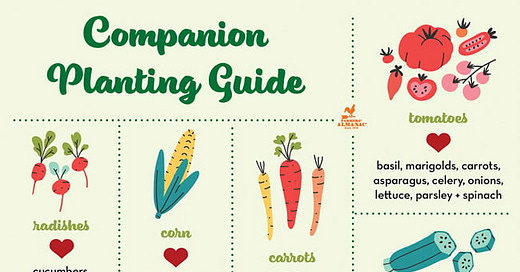What is companion planting?
Companion Planting = Mutual Support
You can plant your vegetables and flowers in mutually beneficial arrangements. It can protect your plants from insects. For example, it’s well known that if you plant basil and marigolds with tomatoes it can keep pests away from your tomatoes.
Check out this website for some good tips. And this site has a chart for companion plants.
Since I was pretty new to gardening I wanted to make sure I planted my native plants where they’d be the most successful in the yard. (I might have made a spreadsheet…) But I figured that if fruits and vegetables had companion plants and things you shouldn’t plant together, native plants might too.
I will share some examples I came up with:
California Poppy likes to be planted with lavender, sage and coneflower
Pacific Ninebark companion plants: chokecherry, ponderosa pines and redwoods
Showy Milkweed likes to be planted with butterfly weed, bee balm, asters and verbena
When it came to my shade garden, things made sense. They grew together in shady forests: Bleeding Hearts thrive with false solomon’s seal, ferns, and stream violets. When it comes to ferns, plant things like osoberry, oxalis, inside out flower and hostas.
Doing it this way really helped me a lot when I tried to figure out where to put my plants. And it was a great way to learn how to garden when I was a newbie. So far, things are doing well!



